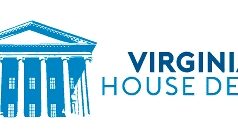In what is undoubtedly the most critical election of our lifetimes, the process of selecting the Democratic nominee is of utmost importance. So now is a good time for a quick civics primer on that process. (Caveat: I’m not an expert on this at all, so please leave comments with any corrections needed!)
The nominee will be chosen at the Democratic National Convention on July 13-16 in Milwaukee, Wisconsin. Each state will send a number of delegates to the convention to vote on the nomination. The number of convention delegates that each state has is determined by a formula, on the basis of the state percent Democratic vote in the last three presidential elections, how many Presidential Electors the state has, with a bonus for states that hold their primary nomination late in the cycle and for those that vote together in a geographic cluster. A small red state like South Dakota has only 19 delegates, while a large blue state like California has 495; Virginia has 124.
Some delegates are “pledged” delegates, who are committed to vote for specific candidates according to the votes they receive in the state’s primary or caucus. Some pledged delegates are district-specific, and are assigned to candidates in proportion to the vote in a Congressional district, subject to receiving at least 15% of the popular vote in that district; others are at-large and are assigned based on the statewide popular vote, subject to a statewide 15% threshold; and a third type of pledged delegates are drawn from Democratic political leaders.
Virginia has 99 pledged delegates—65 are district-specific (4 from CD09; 5 from each of CD02 and CD06; 6 from each of CD01, CD04, CD05, CD07, CD10; and 7 from each of CD03, CD08, and CD11), 21 are at-large statewide, and the remaining 13 are pledged party leaders and elected officials (PLEOs). These pledged delegates are all elected to represent Virginia—the district delegates are elected at Congressional District Conventions held on May 2, 9 or 16, 2020, while at-large and pledged PLEOs are elected at the State Democratic Convention held on June 20, 2020. Note that the elected delegates must be evenly split between males and females, and that there is an affirmative action program to encourage diversity among delegates.
(There are local caucuses in April to pick attendees to the Congressional District Conventions and State Democratic Convention. More information on how you can get involved here.)
In addition to pledged delegates, states also have unpledged delegates, also called automatic delegates, or superdelegates. These delegates—typically Democratic elected leaders and DNC members—are not committed to voting at the National Convention based on the results of the primary nominating process in the state. There was much discussion about these superdelegates in 2016, with the accusation that they rigged the process by endorsing Hillary Clinton in advance of the National Convention. Subsequently, the DNC changed the rules for how these superdelegates participate, so that they no longer vote in the first round of voting at the Convention—their votes do not come into play unless no candidate wins a majority of unpledged delegates and a second round of voting is required.
Virginia has 25 automatic delegates. These consist of 14 DNC members, the 7 Democratic US House members and 2 US Senators, Governor Northam, and former Governor McAuliffe. Note that three of these Congresspeople have made endorsements already—Don McEachin and Elaine Luria supporting Joe Biden, and Don Beyer supporting Pete Buttigieg.
Most years, the delegates and superdelegates assemble at the Democratic National Convention with an outcome that is predictable, based on the results of the state primaries and caucuses that precede it. In fact, the last time a Democratic convention required a second round of voting was in 1952 when Democrats nominated Adlai Stevenson on the third ballot. Although there are many years when pundits draw scenarios where such a contested convention might occur, typically it doesn’t work out that way because states with later primaries wait to see who are the top vote-getters in the early states, and coalesce behind whoever is leading—momentum builds as the states vote.
With 14 candidates on the Virginia ballot, there is the potential for a messier-than-normal primary nominating process, though. How many candidates might meet a 15% threshold in a state? How will later states respond if, for example, only one candidate meets the 15% threshold, but the next two vote-getters earn 13-14% of the popular vote, but therefore earn no delegates? (Note that if no candidate meets the threshold, the top vote-getter is automatically qualified to earn delegates, as well as any candidate earning at least half as much as that candidate.) What if different candidates end up taking all the delegates (by virtue of being the only candidate to earn 15%) in each of the early states?
If no candidate gets a majority of the pledged delegates in the first round of voting at the Convention, all the pledged delegates are “released,” and may vote however they like in future rounds. Here’s where things could get interesting. And where things like the demographics of delegates, the geographic distribution, could make a difference. Would younger delegates favor a particular candidate once they weren’t pledged to whoever won the popular vote in their state? Would female delegates? Would rural delegates vote differently than those from more urban districts? It’s going to be quite interesting to watch. Stay tuned–and participate if you can!














